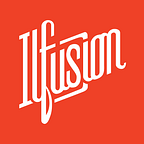How to Make Your UX Designs Developer-Friendly
Friction between UI/UX designers and developers often stems from contradicting values: While designers are mostly focused on the aesthetics and user experience of a product, developers are concerned about the overall feasibility and quality of a certain design.
The truth is that, if a product design isn’t feasible in development, then it cannot be user-friendly.
The key to a successful UI/UX design project is to make the UX design more developer-friendly and, most importantly, to have better collaboration between designers and developers.
Ways to Make Your UX Designs Developer-Friendly
This is not to say, however, that designers should always be the one to adjust. It goes without saying that both teams can learn from one another: Designers to learn what makes a design feasible for development, and for developers to see a design through a designer’s eyes.
1. Make the design predictable
For a design to be user-friendly, it should be predictable enough so that users can intuitively navigate around with ease.
One thing to do here is to stick with “standard” layout patterns — for example, the main navigation is placed at the top, additional information placed on the left or right sidebar, etc.
It’s best not to reinvent the wheel and create too many custom elements unless the usability gains outweigh the losses. If custom elements need to be included, close collaboration between designer and developer should be established early on to see whether it is feasible.
2. Keep design elements consistent
Consistency is another core principle of usability and goes hand in hand with predictability.
Design elements should be consistent so that maintenance and updates in the future can be easily done. For example, icons are best designed with a consistent size. If there are different icon sizes involved, future developments may take more time.
Consistency also makes for a more pleasant user experience, and easier on the part of developers. For example, using consistent spacing between design elements makes it more fluid and easier to develop for a grid-based design. It also provides a consistent framework for both the design team and development team.
3. Use HSL colors instead of hex values
Designers commonly use hex values in choosing a color palette for a design project. However, it may be easier for developers to manipulate colors using HSL because the correlations between color values are seen more clearly with HSL compared to hex.
For example, consider these two variations of light blue: #68B4D4 and #92C8E0. In essence, they are relatively similar, but you can’t tell if you based it on their hex value.
If you translate these colors using HSL values, it’s easier to see the correlation: the HSL #68B4D4 is (198, 58%, 62%) and #92C8E0 is (198, 56%, 73%) — note that the value 198 is consistent, and you can see the difference in saturation and lightness denoted by the percentages.
4. Establish a typographical hierarchy
Typographical hierarchy is another important element in UX design, as it establishes the order of importance of data and allows the user to easily navigate and distinguish content.
A UX design should have — at the very least — three levels of typographic hierarchy: titles, subtitles, and body fonts. The hierarchy can be further refined with headers from H1 level down to H4 or H5.
The important thing here is to maintain consistency and predictability, for the benefit of both the users and developers.
One way to establish a predictable hierarchy is to alternate contrasting typefaces — for example, if the title uses a serif typeface, the body of text uses a sans serif typeface. Headers should also ideally use the same typeface family but denoted by either assigning different font sizes or font-weight.
Bonus Tips: How to Have a Smoother Design to Development Hand-Off
1. Involve the dev team as early possible
As with any team effort, collaboration is key. For a smoother design-to-development hand-off, it’s best to involve the dev team as early as possible instead of waiting at the end of the design process.
Getting the developers early in the conversation, especially during the planning phase, helps in identifying roadblocks early on and sets the direction of the project far more efficiently.
Some questions that need to be addressed are the following:
- Based on experience, what are the common roadblocks faced during designer-developer hand-off?
- What design “standards” worked well during the development phase, and what did not work?
- What are the front-end and back-end architectural constraints that might impact the development of a design?
2. Provide up-to-date documentation and files
Documenting a product design is essential in streamlining both the design process and implementation. Design documentation is also helpful for developers, as developers tend to lean towards a self-guided experience. It also aids in establishing a design system.
Design documentation should have a visual style guide. This would typically involve the color palette, typography, logo/icon variations, etc.
Most importantly, the following files should also be prepared, and all should be up-to-date and with file-naming conventions that both the designer and developer understand:
- UX sketches
- Wireframes
- Site maps
- User flows
- Design mockups
- High-fidelity prototypes
Conclusion
It’s important to note that the definition of a “developer-friendly” UX design differs for every organization — essentially, there is no one-size-fits-all solution. The key takeaway here is that collaboration between designers and developers is crucial.
If you’re interested to learn more about UX/UI design and development, head on to https://www.ilfusion.com/ to get started.
